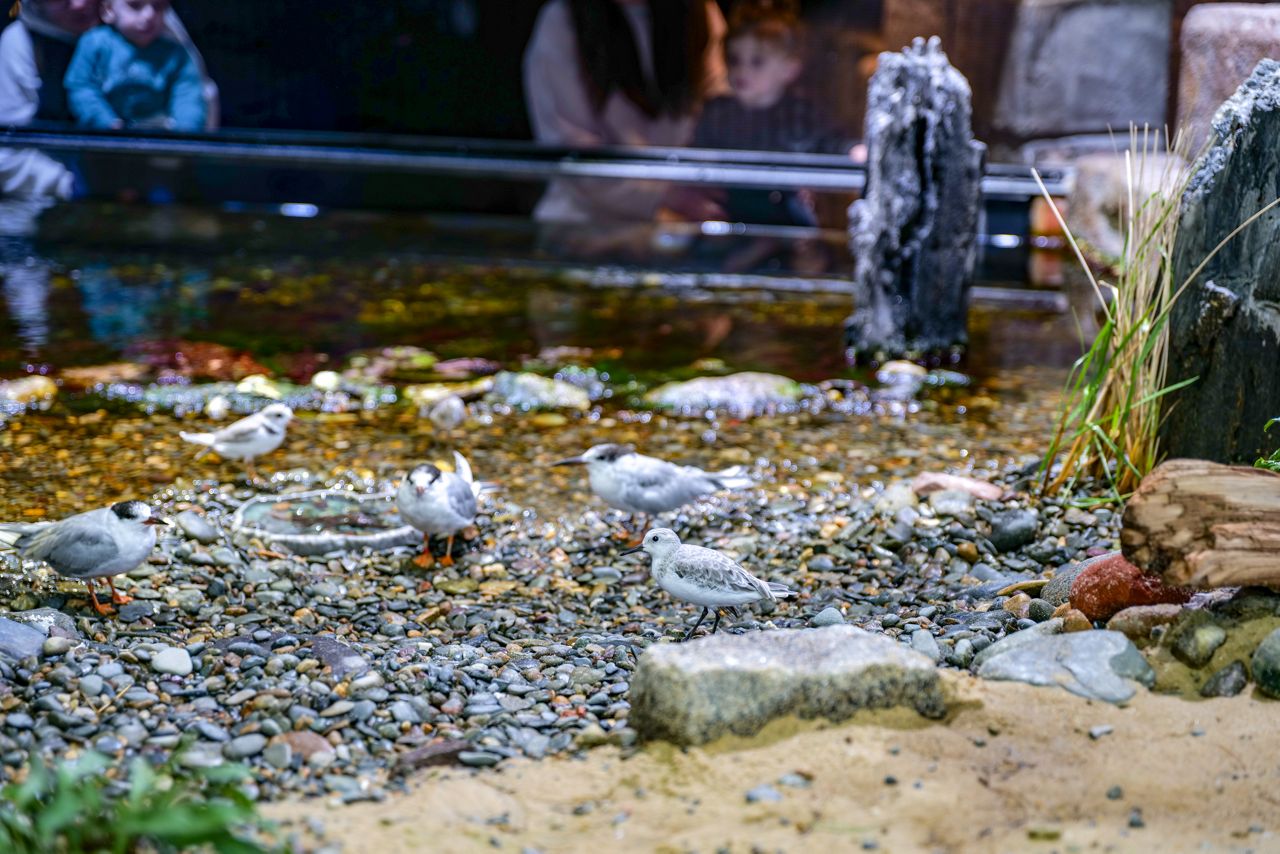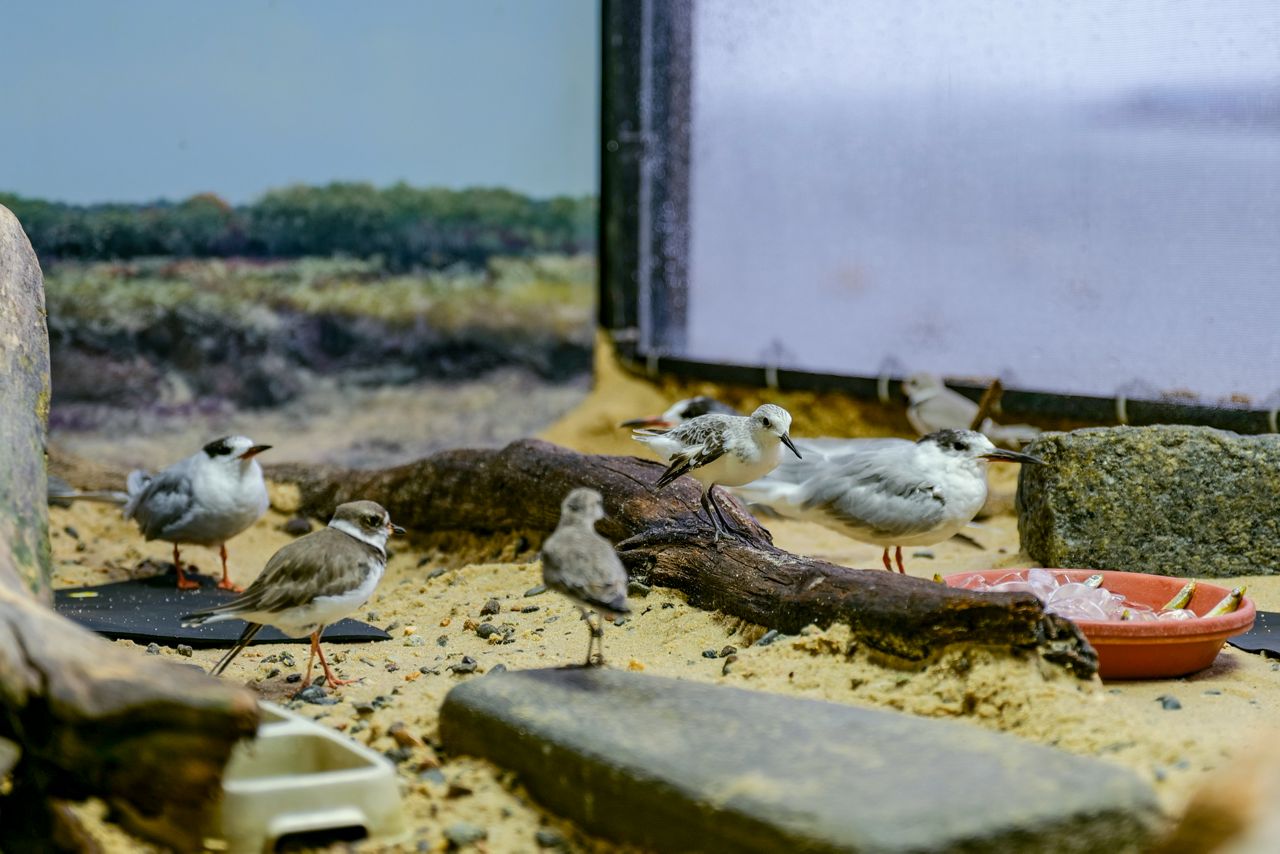A small sandpiper named Peepsqueak is settling into a new home at the New England Aquarium after being rescued on a Maine beach late last year.
Aquarium staffer Sarah Tempesta was visiting York over Labor Day Weekend when she spotted the small gray and white bird walking on a beach, according to a press release.
“It clearly had an injured wing and was acting abnormal,” Tempesta said in the release. “I could see that it could not fly and likely would not survive without human intervention.”

Tempesta worked with the Center for Wildlife in Cape Neddick and federal wildlife officials to transport Peepsqueak to a quarantine setting at the Aquarium’s rehabilitation center in Massachusetts.
“Right away, the bird began digging in the sand, bathing herself and looking for food,” said aquarist Kristen Ulrich in the release. “We helped her adjust to a more normal diet as our team continued her recovery.”
Veterinarians determined that the bird was healthy besides the broken bones near her wrist, but had a “permanent wing droop” and would not be able to fly again.
Peepsqueak has now moved into the Aquarium’s shorebird exhibit in Boston and is settling in well with the staff and other birds, all former rescues themselves, the release said. Sandpipers can live 10 to 15 years in the wild or into their 20s at the Aquarium.
Maine is home to 38 species of shorebird, including more than 20 species such as the sanderling that migrate through the state, according to the Department of Inland Fisheries and Wildlife. These populations are declining due to habitat loss and other human impacts.
The state says all shorebirds are negatively affected by being near humans and dogs, though sanderlings are a little more tolerant of people than, for example, the threatened piping plover.



